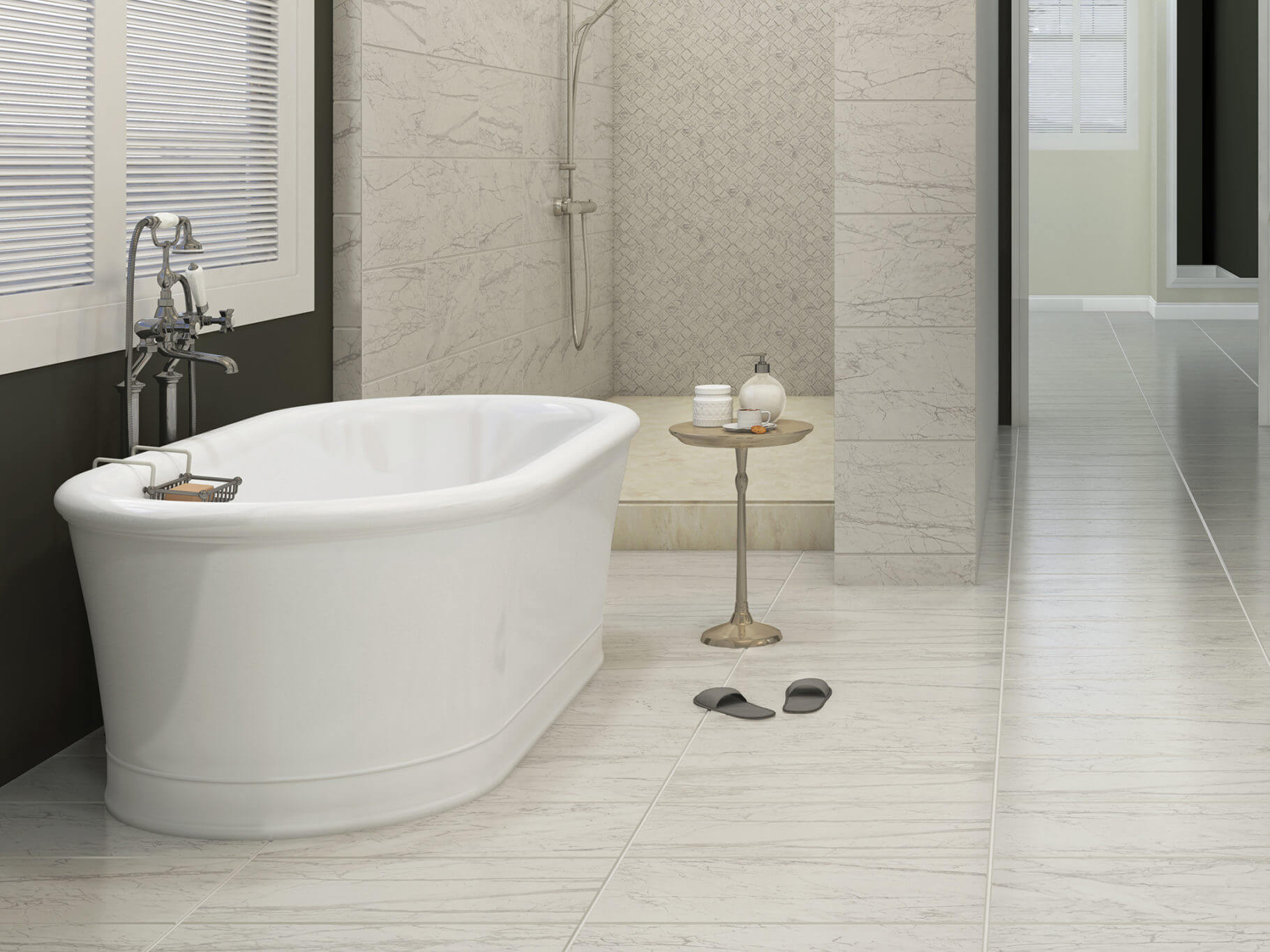Also known as in-floor heating, radiant heat can be a luxurious addition to a specific room or an effective solution for heating any space. Learn more with these tips about installing radiant heat in your home and why homeowners trust ceramic tile to protect and make the most of their investment.
What Is Radiant Heat?
Radiant heating is a heating system that’s installed underneath your flooring. While traditional heating systems heat the air in your home, radiant heating works by directly heating the floor, and in turn warming the space from the floor up.
Many people think of radiant heating as a new trend, but it actually has origins recorded from the Roman Empire. Roman bathhouses, as well as wealthy individuals, heated their rooms using hypocausts, complex underground heating systems involving fires and ceramic tiles to maintain the heat.
Modern radiant heating systems can reach temperatures as high as 104 degrees Fahrenheit, although typical temperatures range between 80 and 85 degrees.
Radiant heating warms using infrared heat radiation, so the heat it produces often feels the same as standing in the sun and feeling its warmth. As a result, you will feel warm even if the temperature in the room is lower than you might think.
Types of Radiant Heating Systems
Three different types of radiant heating systems are available for those interested in heated floors.
Forced-Air Radiant Heating
Air-heated radiant floors work by using a furnace to pump hot air through channels in the floor. This type of radiant heating has proven to not be cost-effective because air can’t effectively hold large quantities of heat, and is thus rarely used in homes.
Electric Radiant Heating
Electric radiant heating consists of either electric cables built directly into the flooring or electrically conductive mats installed between the subfloor and the floor covering.
Electric radiant heating is typically most cost-effective in the following two scenarios:
- Your flooring has a significant thermal mass, and your utility provider offers time-of-use rates so that you can heat your flooring during off-peak hours (generally during the night). With a high enough thermal mass, your floor will retain the heat for eight to 10 hours without additional electricity.
- You are adding space to your home, and extending your current heating system into this new space would be impractical or expensive.
Hydronic Radiant Heating
Hydronic radiant heating systems are made up of a boiler and tubing laid under the floor in a specific pattern. Water heated by the boiler is pumped through the tubing to heat the flooring and, consequently, the room.
This type of radiant heating is the most cost-efficient and popular in areas that rely heavily on heating. Installation costs vary by installation type, home size, floor covering, location, and other factors.
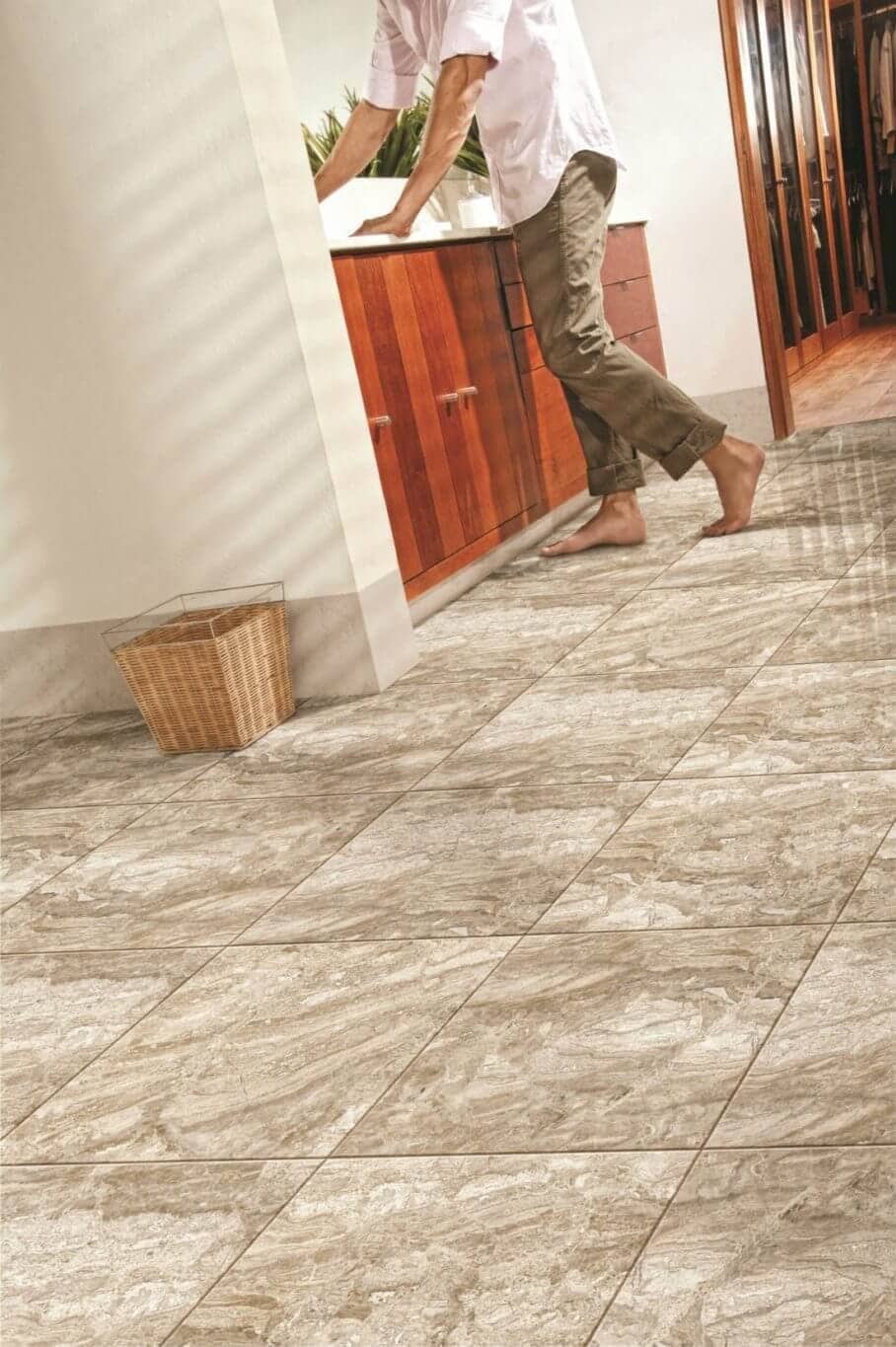
Benefits of Heated Floors
Warm Feet
The most obvious benefit of in-floor radiant heating — and the reason so many people install it in the first place — is the comfort that comes with having warm floors.
Imagine stepping out of the shower onto a warm ceramic tile floor. Little luxuries like this are what makes a house a home.
Superior Heating
The ability to uniformly heat a space is one of the greatest benefits of radiant heating.
Forced-air heating systems rely on vents to heat a room, meaning that the closer you are to the vent, the warmer you typically feel. (We’ve all experienced the need to sit directly in front of the heater on a chilly day.) Likewise, the corners that are farthest from the vent take longer to heat up.
Radiant floor heating, on the other hand, heats up the entire floor evenly and at the same time, creating a consistent temperature throughout the room and eliminating cold spots.
Energy Efficiency
Radiant heating systems have been reported to be at least 25% more energy-efficient than forced-air heating systems.
One reason is that radiant heating systems lack air ducts, so there’s nowhere for hot air to escape — all of the heat produced is retained and put to use.
Electric radiant heating systems, specifically, can heat up within half an hour to an hour. As such, homeowners can set the radiant heating to be on only when rooms are in use by using a programmable thermostat or manually, so that no energy is wasted.
To further improve the energy efficiency of hydronic radiant heating systems, homeowners can choose a system with highly conductive panels so that their boiler is taxed less. Doing so can lead to an additional 10 to 20% in energy savings every month.
Better Air Quality
Another benefit of ductless heating is that allergens and dust aren’t being blown around — a disadvantage of forced-air heating systems.
Forced-air systems also suck the humidity out of your space leaving the air (and your skin) feeling dried out.
Radiant floor heating systems don’t have these issues. Rather, radiant floor heating can help create an indoor environment lower in air allergens and can help you balance your space with a comfortable humidity.
[Related: Health Benefits of Ceramic Tile]
Silence
Clinging radiators, vents turning on and off — sounds like these aren’t an issue for radiant heating systems, which are entirely silent.
Scalability
Install radiant heating throughout your entire home, in one room, or even in just part of a room.
That’s right — in-floor radiant heating is completely scalable to your needs and budget.
For example, rather than heat an entire master bathroom, you could heat just the area in front of the vanity, shower, or toilet, where you’ll get the most bang for your buck and likely be able to purchase just one presized installation mat rather than a full-room custom mat.
Minimal Maintenance Required
Electric radiant heating systems are virtually maintenance-free after installation and often come with warranties of 25 to 30 years. Wi-Fi or programmable thermostats allow you to control the heating easily.
Hydronic heating systems require slightly more maintenance, but are still highly manageable. Most pumps are maintenance-free and can last up to 10 years, whereas boilers and water heaters require regular servicing (check the manufacturer’s specifications for maintenance frequency).
Boost in Resale Value
Heated floors are a smart idea if you eventually plan to sell your home.
In a study of four million homes sold in 2016 and 2017, Zillow found radiant heating to be among the most valuable upgrades homeowners could make to increase home value. “Radiant heating” was one of the most popular keywords in a home listing, and the presence of heated floors corresponded with a 24% higher sale price.
[Related: Five Ways to Make Your Home Remodel Pay Off]
Best Flooring for Radiant Heat
Certain floor coverings are well-suited for in-floor heating applications. When choosing a floor covering for your radiant heating system, it’s important to consider the following important properties of the material:
- Thickness
- Thermal conductivity
- Tendency to expand and contract
- Ability to withstand moisture and heat
For example, floor coverings such as hardwood and engineered wood can be ineffective thermal conductors, leading to energy loss. Wood products can also be damaged by water and heat, and carpet fails to meet any of these requirements.
Ceramic tile is often cited as the best materials for in-floor radiant heating: Ceramic tile is thin, has a mineral composition that conducts heat well, and isn’t affected by moisture or heat.
When paired with radiant heating systems designed for use with ceramic tile, tile can even contribute to a building’s energy efficiency and green building design credits, such as Leadership in Energy and Environmental Design (LEED).
What’s more, ceramic tile is available in almost any look imaginable — so if you want the look of hardwood or other materials that don’t pair well with radiant heating, you can have that look or style with ceramic tile.
[Related: Guide to Going Green With Ceramic Tile]
Where to Use Radiant Heat in Your Home
When paired with ceramic tile, radiant heating can be used anywhere in your home. Ceramic tile is water-, stain-, scratch-, bacteria-, and flame-resistant, so it’s tough enough to handle the demands of any space.
That being said, if you only plan on installing in-floor heating in certain areas of your home, it’s best to choose spaces where you can get the most value out of in-floor heating benefits.
Radiant heating is ideal for:
- Bathrooms: Enjoy toasty feet as you brush your teeth in the morning. For partial bathroom installations, consider heating the areas in front of the vanity, shower, and toilet.
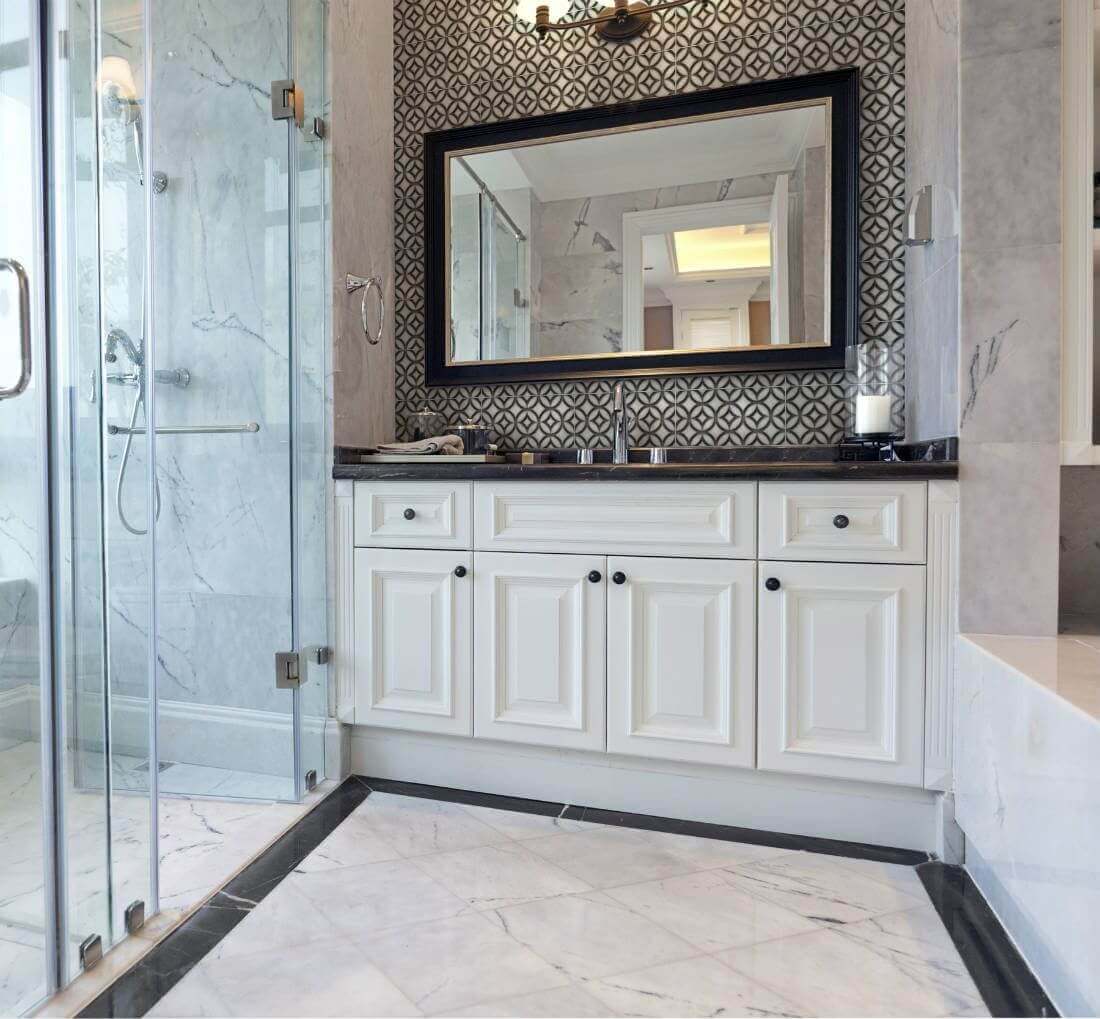
- Kitchens: You spend a lot of time in the kitchen, so why not make it more comfortable? The areas in front of the sink, stove, or counter are ideal for partial installations.
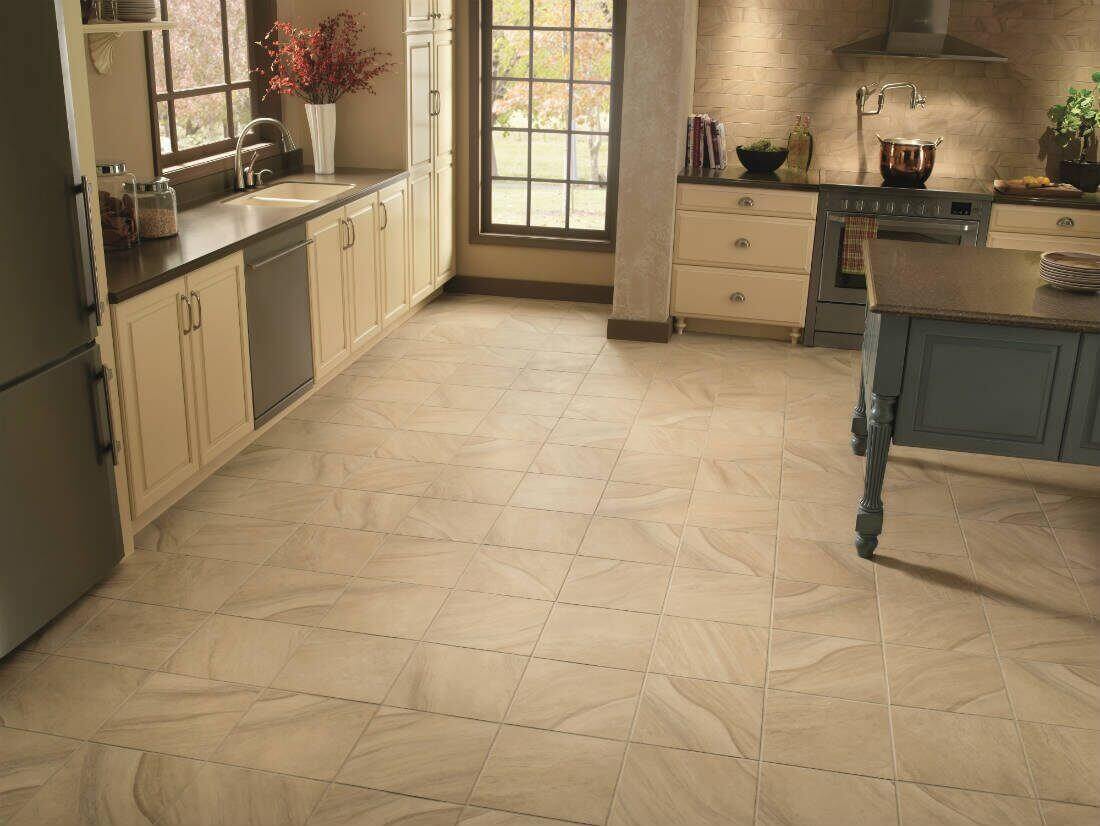
- Entryways: Whether you install radiant heating in your mudroom, foyer, or near indoor/outdoor doorways, you’ll appreciate it as soon as you step foot inside the house.
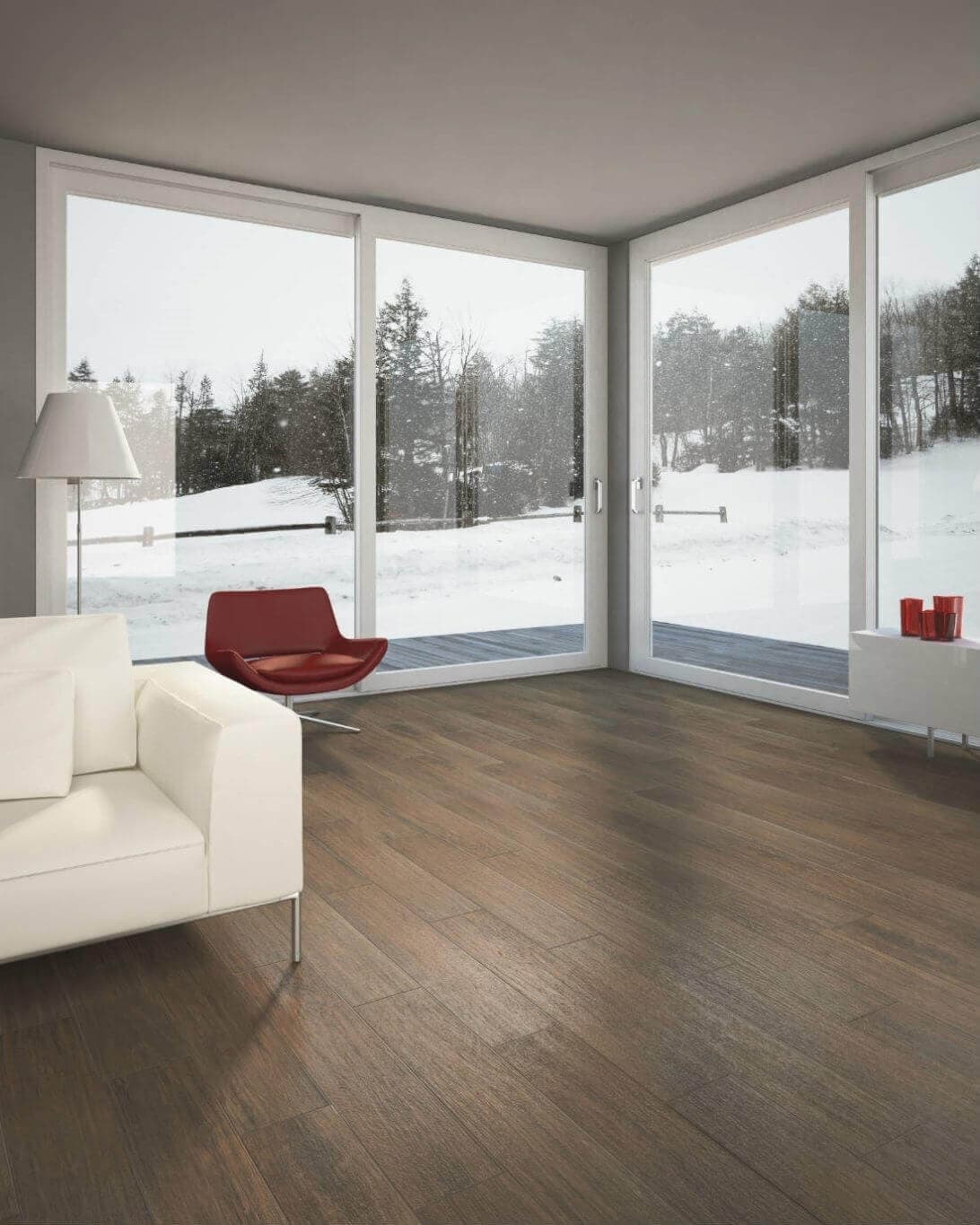
- Bedrooms: What better incentive to get out of bed in the morning than a toasty floor?
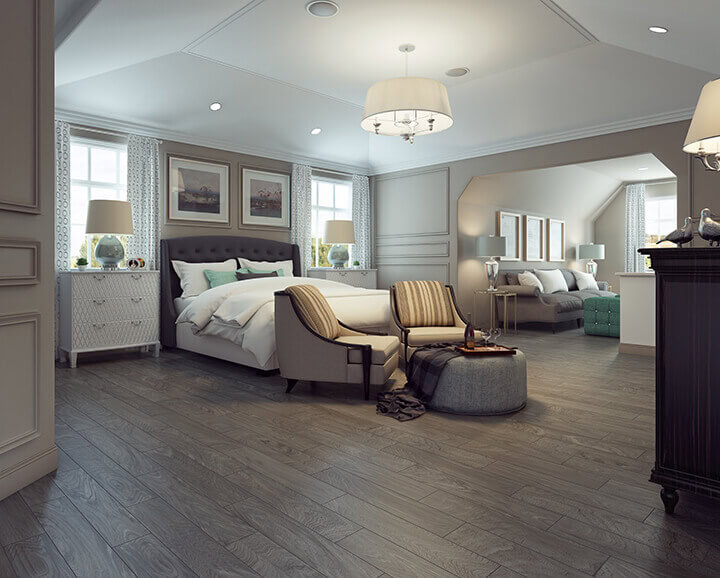
- Rooms with tall ceilings: Heat rises, so in high-ceilinged rooms, you’ll end up spending more with forced-air heating systems yet feeling the heat less. Radiant heating systems distribute heat better in these spaces by slowly emitting heat from the floor up.
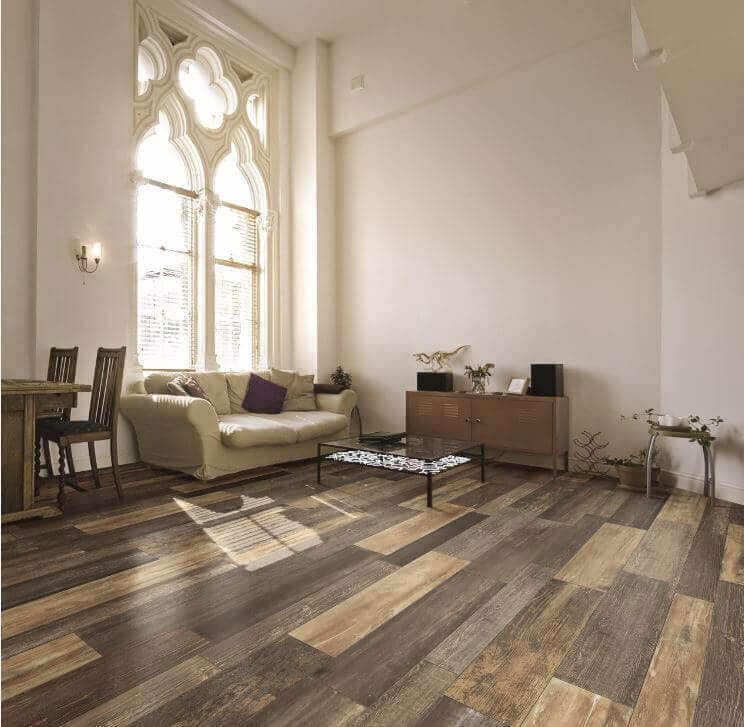
- Additions: Spaces not originally included in your heating system can be heated without overhauling your current system. Additionally, the on-demand ability to heat an area with heated flooring is an advantage for spaces that aren’t in use all the time.
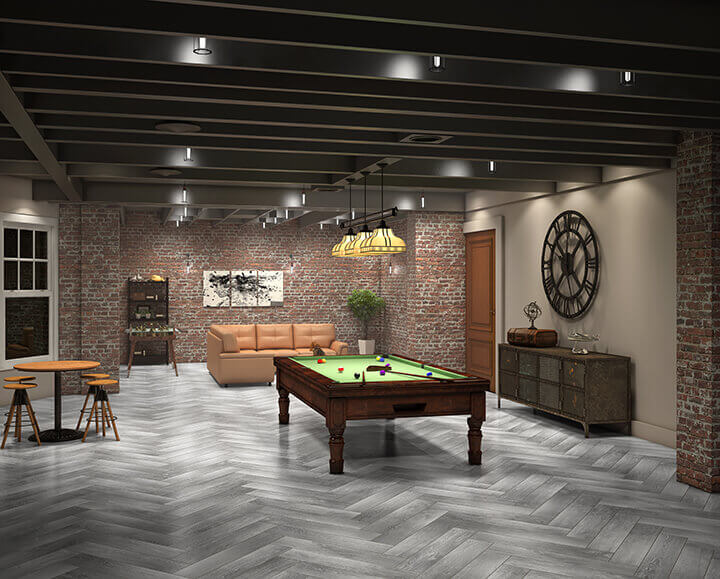
- Special use: Any area where you know you’ll be spending time on the floor or that is a “cold spot” in your space.
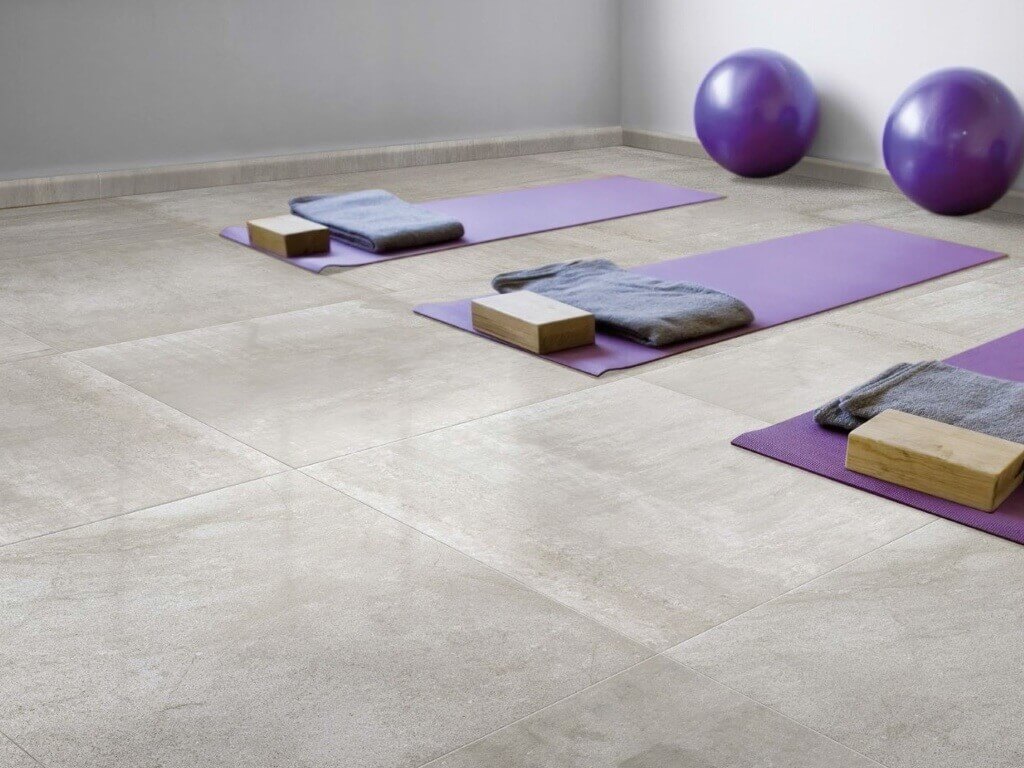
[Related: Improve Any Room With These 15 Easy Ceramic Floor Tile Ideas]
Install Heated Ceramic Tile Flooring in Your Home
Warming up to the idea of in-floor heating?
Move forward with your radiant heating project by deciding where you want to put it, choosing the kind of radiant heating system you want to use, and finding a reliable contractor to install it. Keep in mind that electric radiant heating systems typically require a certified electrician for installation.
When it comes to choosing ceramic tile for your heated flooring, visit our Design Gallery and Pinterest boards for help choosing the best design for your space. Also, consider how you’ll coordinate your heated flooring with other tile applications in your space, such as your backsplash or countertop tile.
Once your project is complete, you can stand tall and enjoy your toasty (and tasteful) ceramic tile floors for many years.

